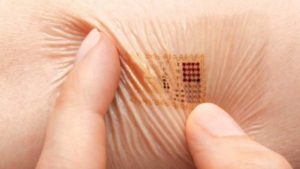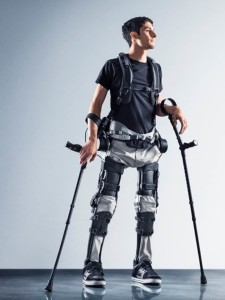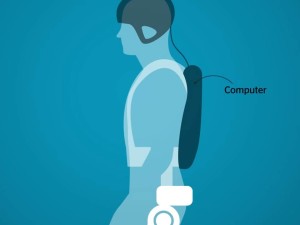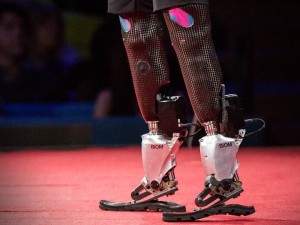
Here is the ultimate wearable. The State University of Illinois has developed a biostamp with sensors build into a silicon patch at the size of a fingernail. It is powered wirelessly and transmits the body data to your smartphone. It could measure all possible body functionalities soon and become a challenge for your local doctor. Read more …
2. February 2016
In
Bionics

Paralyzed from the waist down after a BMX accident, Steven Sanchez rolled into SuitX’s Berkeley, California, office in a wheelchair. A half-hour later he was standing and walking thanks to the Phoenix—a robotic exoskeleton now available for around $40,000. The suit returns movement to wearers’ hips and knees with small motors attached to standard orthotics. Wearers can control the movement of each leg and walk at up to 1.1 miles per hour by pushing buttons integrated into a pair of crutches. Read more …

Robotics and brain computer interfaces hold the promise of making patients with paralysis walk again. Scientists and engineers are currently developing exoskeletons that respond to the patient’s brain orders and help them move their limbs. In the future, these technologies could dramatically help people with paralysis after spinal cord injuries and patients with parkinson. This is how it’s done. Read more …
4. October 2013
In
Bionics

Please do watch this breathtaking video! Hugh Herr is building the next generation of bionic limbs, robotic prosthetics inspired by nature’s own designs. Herr lost both legs in a climbing accident 30 years ago; now, as the head of the MIT Media Lab’s Biomechatronics group, he shows his incredible technology in a talk that’s both technical and deeply personal — with the help of ballroom dancer Adrianne Haslet-Davis, who lost her left leg in the 2013 Boston Marathon.




